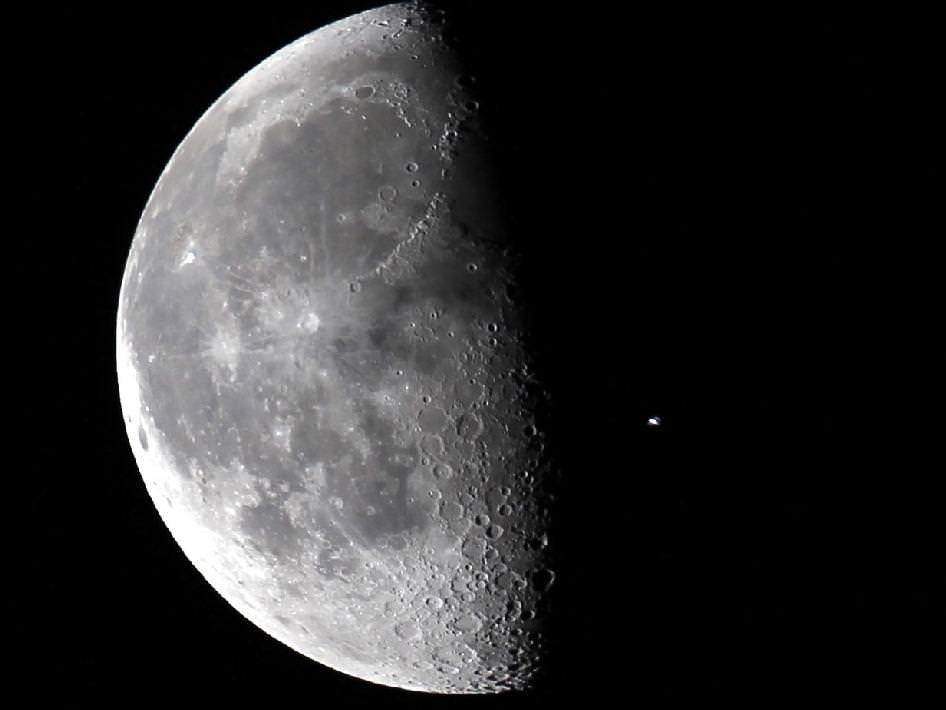

Flying Across the Moon
[/caption]
The equatorial circumference of the Moon is 10,916 km. And the circumference of the Moon in miles is 6,783 miles. So, if you wanted to drive your lunar rover around the Moon and return back where you started, you’d need to travel 10,916 kilometers.
Need some comparison? The equatorial circumference of the Earth is 40,075 km. That makes the size of the Moon’s circumference about 27.24% the size of the Earth.
The Moon isn’t the largest moon in the Solar System – it only has an equatorial radius of 1,737.4 km. The largest moon is Jupiter’s moon Ganymede, with an equatorial radius of 2,634 km. That means Ganymede’s circumference is 16,550 km; bigger than the Moon’s circumference by about 5,634 km.
Want some more measurements?
The circumference of the Moon in meters: 10,916,000 meters
The circumference of the Moon in centimeters: 1,091,600,000 centimeters
The circumference of the Moon in feet: 35,813,648 feet
The circumference of the Moon in inches: 429,763,780 inches
We’ve written many articles about the Moon for Universe Today. Here’s an article about the full Moon, and here’s an article about the atmosphere of the Moon.
If you’d like more info on the Moon, check out NASA’s Solar System Exploration Guide on the Moon, and here’s a link to NASA’s Lunar and Planetary Science page.
We’ve also recorded an entire episode of Astronomy Cast all about the Moon. Listen here, Episode 113: The Moon, Part 1.
Hypervelocity stars have been seen before but NASA scientists have just identified a potential record-breaking…
Finding alien life may have just got easier! If life does exist on other worlds…
MSL Curiosity is primarily a rockhound. It's at Gale Crater, examining the rocks there and…
Venus is very variable. Its surface constantly changes from volcanic activity, and the difference between…
Hydrogel protection could be crucial for safe human space exploration. It’s a key problem that…
When massive stars reach the end of their life cycle, they undergo gravitational collapse and…